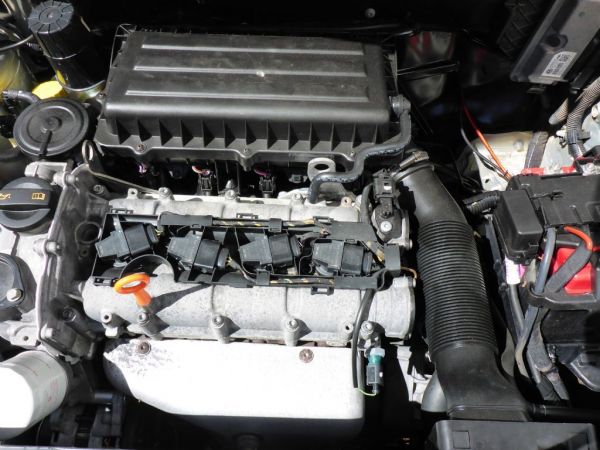Choose a durable clp engine for better efficiency.
Choose a durable clp engine for better efficiency.
Blog Article
Exactly How a Clp Engine Can Enhance Efficiency in Different Industries
The arrival of CLP engines marks a significant shift in functional performance across different markets, driven by their capacity to optimize fuel usage and lessen downtime. As companies increasingly prioritize sustainability together with effectiveness, the duty of CLP engines becomes even a lot more critical.
Review of CLP Engines
CLP engines, or Continuous Liquid Propellant engines, stand for a substantial advancement in propulsion modern technology, particularly for room applications. These engines make use of a constant feed system that permits the continual expulsion of propellant, causing improved effectiveness and performance compared to traditional strong or hybrid propulsion systems. By preserving a continuous circulation of liquid propellant, CLP engines can accomplish more accurate thrust control, which is essential for navigating spacecraft in different mission scenarios.
The style of CLP engines integrates advanced products and ingenious fuel management systems. clp engine. This leads to decreased weight and increased integrity, necessary aspects for long-duration area missions. The continuous operation minimizes the danger of combustion instability, a typical difficulty in standard rocket engines.

Benefits in Manufacturing
The manufacturing of Continuous Liquid Propellant (CLP) engines presents several noteworthy advantages that enhance both efficiency and cost-effectiveness. One of the key advantages is the structured manufacturing procedure, which minimizes the complexity connected with conventional propulsion systems. By using liquid propellant, producers can achieve greater accuracy in engine efficiency, bring about maximized power output and reduced waste.
Furthermore, CLP engines assist in a higher degree of modularity, enabling easier assimilation right into different manufacturing lines. This adaptability can considerably lower lead times and boost total functional flexibility. Using CLP modern technology likewise tends to lessen the requirement for extensive upkeep because of fewer moving parts, which translates into decreased downtime and functional costs.

Applications in Logistics
Leveraging Continual Fluid Propellant (CLP) engines in logistics supplies significant advantages in operational efficiency and reliability. These engines offer a robust service for various why not try here transportation needs, enabling the seamless movement of goods throughout substantial ranges. The inherent layout of CLP engines enables regular power result, which converts right into smoother and a lot more foreseeable transportation schedules.
One of try this the key applications of CLP engines in logistics remains in sturdy products transportation, where they can drive both ground and aerial automobiles. Their capacity to preserve high efficiency under varying load problems ensures that delivery timelines are satisfied, thereby enhancing consumer complete satisfaction. Additionally, CLP engines can be integrated into automated logistics systems, promoting real-time monitoring and enhancing route preparation.
Additionally, the longevity of CLP engines minimizes upkeep downtime, allowing logistics companies to maximize their operational capabilities. This is specifically helpful in warehousing procedures, where performance in taking care of and transferring items is essential. As logistics remains to evolve, the assimilation of CLP engines stands for a forward-thinking technique that not only boosts performance yet likewise sustains the market's growing demands for reliability and rate.
Influence On Power Efficiency
Just How do Continuous Fluid Propellant (CLP) engines boost energy performance in transportation? CLP engines use a regular flow of fluid gas, optimizing burning procedures and maintaining a steady drive output. This style decreases energy losses connected with traditional combustion engines, where gas distribution can vary and cause inadequacies.
The continuous procedure of CLP engines permits for a more effective thermal cycle, causing greater specific impulse contrasted to standard engines. clp engine. This converts to reduced gas intake for the same amount of work done, dramatically reducing functional prices across various transportation markets, consisting of aeronautics and maritime sectors
Furthermore, the capability of CLP engines to preserve optimum efficiency under differing load conditions reduces the need for frequent acceleration and deceleration, even more improving fuel effectiveness. Enhanced power effectiveness not only adds to cost savings but likewise causes decrease greenhouse gas emissions, aligning with global sustainability goals.
Future Trends and Innovations
Emerging developments official website in Continuous Liquid Propellant (CLP) engine innovation pledge to change the landscape of transport performance and sustainability. As industries pivot toward greener choices, CLP engines stand at the center, incorporating ingenious materials and style approaches that enhance performance while minimizing ecological effect.
One of the most promising trends is the fostering of hybrid systems that combine CLP engines with renewable energy resources. This harmony can maximize gas usage and reduce discharges, lining up with global sustainability goals. Innovations in computational fluid dynamics (CFD) are helping with the design of more aerodynamically effective engines, leading to minimized drag and improved fuel efficiency.
Moreover, the development of clever monitoring systems is readied to enhance functional efficiencies. These systems utilize data analytics and IoT innovation to maximize engine performance in real-time, making certain that the engines operate within their most effective parameters.
As research study remains to explore alternate propellant solutions-- such as biofuels and synthetic gas-- the future of CLP engines looks promising. By utilizing these technologies, industries can not only boost their efficiency however additionally contribute considerably to a cleaner, a lot more lasting future in transportation.
Final Thought
In verdict, CLP engines stand for a substantial advancement in efficiency across numerous industries. The integration of advanced materials and less relocating components lessens maintenance demands, while alignment with sustainability goals positions CLP engines as a pivotal technology for the future.
Report this page